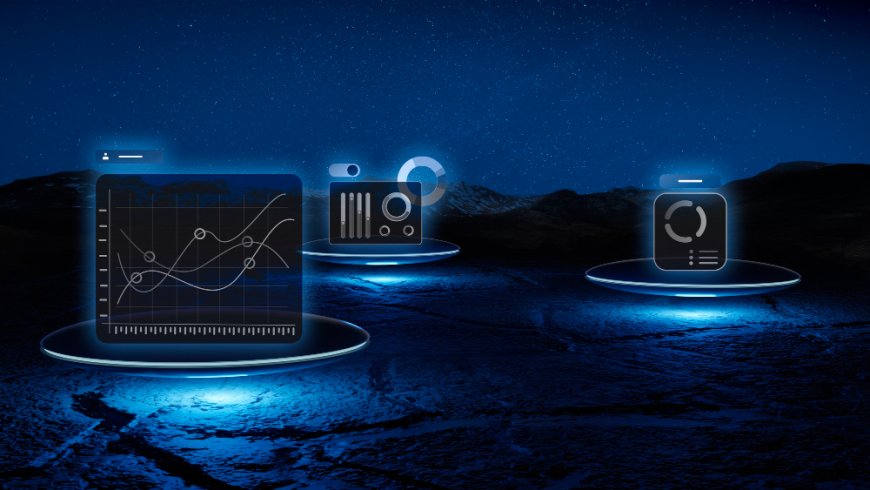Data Science: A Key Player in Unlocking Insights from Big Data
By combining advanced statistical techniques, algorithms, and machine learning, data science enables businesses and organizations to make data-driven decisions that drive innovation and efficiency.

In today's digital age, data is being generated at an unprecedented rate. From social media interactions to sensor data from smart devices, the amount of information available is staggering. But having data alone isnt enough. The true value lies in extracting meaningful insights from this vast sea of information. This is where data science steps in, playing a pivotal role in unlocking the potential of big data.
What is Data Science?
Data science is an interdisciplinary field that uses scientific methods, algorithms, and systems to extract knowledge and insights from structured and unstructured data. It combines techniques from statistics, machine learning, data mining, and big data analytics. The ultimate goal of data science is to turn raw data into actionable insights that can guide decision-making processes.
In this context, data science services are designed to assist organizations in leveraging the full potential of their data. Whether its through predictive analytics, pattern recognition, or real-time data processing, these services provide businesses with the tools needed to make more informed choices and drive their strategies forward.
How Data Science Unlocks Insights from Big Data
1. Predictive Analytics
One of the primary applications of data science is predictive analytics. By analyzing historical data, data scientists can build models that predict future trends and behaviors. These predictive models are invaluable in fields such as finance, healthcare, and marketing, where anticipating future events can lead to better decision-making and strategic planning.
For instance, in retail, predictive analytics can help companies forecast which products are likely to be in demand, enabling them to manage inventory more efficiently. Similarly, in healthcare, predictive models can help in identifying patients at risk of developing certain conditions, allowing for earlier interventions.
2. Pattern Recognition
Another essential function of data science is pattern recognition. This involves identifying regularities and trends within large datasets. Using machine learning algorithms, data scientists can uncover hidden patterns in data that are not immediately obvious. This can lead to breakthroughs in various sectors, such as fraud detection in banking or identifying fraudulent claims in insurance.
In industries like e-commerce, pattern recognition helps companies understand customer behavior, predict purchasing trends, and personalize the shopping experience. For example, by analyzing a customer's past purchases and browsing history, companies can offer targeted recommendations, increasing the likelihood of conversions.
3. Data-Driven Decision Making
Data science empowers organizations to make decisions based on data rather than intuition or guesswork. With the help of advanced data analytics tools, businesses can gain a deeper understanding of their operations, customer preferences, and market trends.
For example, companies in the financial sector use data science to analyze market data, assess risks, and develop trading strategies. In manufacturing, data science is used to optimize production processes, reduce downtime, and increase efficiency. By making data-driven decisions, organizations can stay competitive and adapt to changing market conditions.
4. Real-Time Analytics
In the age of big data, the ability to process and analyze data in real time has become increasingly important. Real-time analytics allows businesses to make immediate decisions based on the most current information available.
For instance, in the transportation industry, real-time analytics can be used to track vehicle locations and adjust routes to avoid traffic congestion. Similarly, in social media, real-time data processing helps companies understand trending topics and engage with customers in real-time, improving brand presence and customer satisfaction.
5. Big Data Visualization
Visualization is a critical component of data science, as it helps to transform complex datasets into easy-to-understand visual representations. Data scientists use various tools to create charts, graphs, and dashboards that present data in a way that is both informative and visually appealing.
These visualizations help stakeholders quickly grasp insights and make more informed decisions. For example, an executive team in a company can use a data dashboard to track key performance indicators (KPIs) in real-time, enabling them to monitor the health of the business and take immediate action if necessary.
The Future of Data Science and Big Data
As big data continues to grow, the role of data science will only become more critical. With advancements in artificial intelligence, machine learning, and cloud computing, data scientists will have access to even more powerful tools and techniques for analyzing data.
The future of data science holds exciting possibilities. From improving automation and personalization in customer service to optimizing supply chains and enhancing healthcare outcomes, data science will continue to unlock new opportunities for businesses and organizations across industries.
Conclusion
In conclusion, data science is at the forefront of the big data revolution, enabling organizations to extract valuable insights and make data-driven decisions that drive success. By using techniques like predictive analytics, pattern recognition, and real-time analytics, data scientists are uncovering new opportunities for growth and innovation. As the world continues to generate more data, the importance of data science services will only continue to grow, helping businesses unlock the full potential of big data to gain a competitive edge.
































